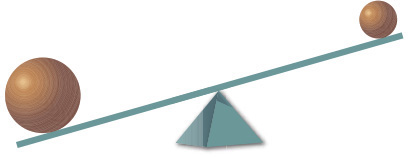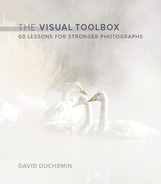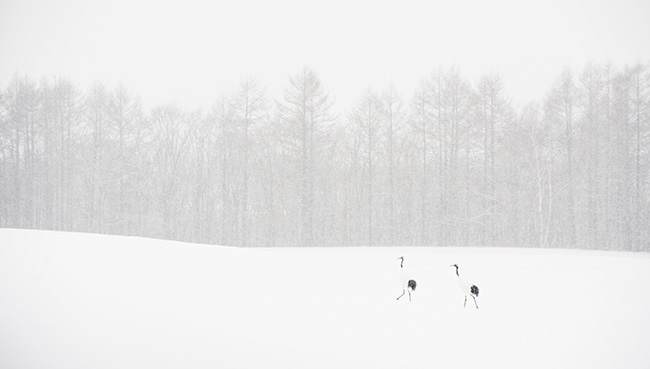Lesson 41. Experiment with Balance and Tension
Like so many things not directly related to the mechanics of photography, it took me a long time to wrap my brain around the issue of balance, much less the need for it in the first place. But balance is, ultimately, not something we can opt out of. Our photographs will be balanced—statically or dynamically—or they’ll be imbalanced, but the balance in an image will affect how people experience your photograph. It is a key consideration in composing your photographs, so the sooner you pay attention to your own sense of balance and learn to play with it, the better.
Nikon D800, 200mm, 1/200 @ f/7.1, ISO 400
I could have photographed these cranes much closer, but placing them where I did in the much wider scene allowed me to balance them against the negative space formed by so much of the rest of the image. This is a great example of dynamic balance. A closer crop, with the cranes at the center of the frame, would be a static balance.
Balance in a photograph is much the same as it is in the so-called real world. Visual balance takes its cues from physical balance. It’s all about mass. Physically, if you have an object on one side of a seesaw and a heavier object on the other, with the fulcrum in the middle, it will not be balanced. Replace the lighter object with one of the same weight as the heavier object, and the seesaw balances out again. That’s static balance. But there’s another way to balance it if you insist on keeping the objects of different weights: change the placement of the fulcrum, moving it toward the heavier object, which makes a lever of the seesaw and allows you to regain balance. That’s dynamic balance.
It’s helpful to get a sense of this because it’s not often that we’ll be able to, or even want to, change the visual mass in our images to find perfect static balance. Complicating it even further, there’s truly no way to objectively weigh the visual mass of the elements in a frame. Remember, visual mass is not about the size of the elements, though that plays into it, but the pull on the eye. A large black rock can have the same mass as a small child, and depending on how large the rock is and how adorable the child is, the mass of each will change. How do you assign a value to how much my eye is drawn to a red raincoat, the laugh of a child, or the shape of a lone tree on a hill? You can’t. But you can play with it until it feels right, and that’s one of the things that allows us to put our own stamp on our work—we’ll all treat balance and tension a little differently, and in so doing we’ll create different photographs that create different experiences for each of the readers of our photograph.

Imbalanced

Static Balance

Dynamic Balance
“We’ll all treat balance and tension a little differently, and in so doing we’ll create different photographs that create different experiences.”
This is why the so-called rule of thirds is so slavishly followed—because it so often works. The rule says put your main subject on one of the thirds of your frame, not in the middle. Why? Placing it in the middle is static. Symmetrical. Potentially boring. Putting the subject on the leftmost third, for example, is like shifting the fulcrum. Now the visual mass of the main subject on the first horizontal third of the frame balances against the two-thirds of negative space. Balanced but in tension. Dynamic. More interesting. But will one-third always do it? Not necessarily. It depends on the subject. And the negative space. And the feeling you intend to create. And it depends on all kinds of other decisions and constraints, like what you’ve chosen to do with scale in your image. There’s no reason it shouldn’t sometimes be the “rule of fifths or sixths.” And when what you want is symmetry and static balance to create serenity, then the right place—rule of thirds be damned—might be right smack in the middle. Understand why the rule of thirds works sometimes, and that will help you know when to use it, when not to use it, or when to modify it.

